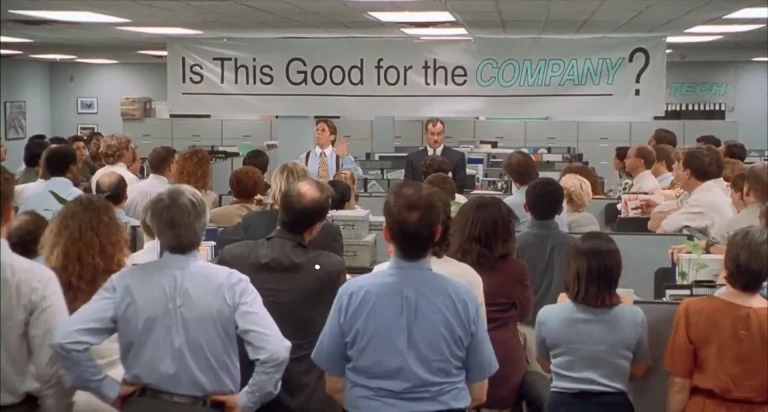You’re Grounded! 6 U.S. Agencies Receive Bad Report Cards for Writing
A new report on the federal government’s use of plain language offers lessons for corporate communicators
Despite a history of eloquent speeches delivered by some of its chief executives, the federal government isn’t exactly known for top-notch communications.
Indeed, most people think “federal government” and imagine “mind-numbingly boring.” That’s too bad, given the scope and importance of its activities and the vast amount of data and information it makes public.
Shouldn’t federal government websites understand audience needs; use plain, credible, jargon-free writing; and provide readers with logical structure and content, compelling and clear information design, and easy-to-use navigation?
Sure. Yet the average writing grade for 21 executive branch agencies was C in 2022, down from B-minus in 2021, according to the Washington, D.C.-based nonprofit Center for Plain Language, which this month issued its Federal Plain Language Report Card. The average would have been higher but for six F’s, the most since the Center began issuing report cards in 2012.
Many corporations also struggle to use everyday language. For all professional communicators, the Report Card is worth reading for its detailed breakout of 24 questions the evaluators ask when reviewing federal websites.
The drive to make federal agencies use plain writing stems from a 1998 Clinton Administration initiative led by Vice President Al Gore. But the Clinton initiative wasn’t made law until 2010, when the passage of the Plain Writing Act mandated that federal agencies write clearly and report on their progress.
“The Plain Writing Act is like a lion with no teeth,” said Barbra Kingsley, chair of the Center, which launched the Report Card as an unofficial way to keep the feds honest. “There’s no plain language police out there making sure that federal agencies do it or don’t do it. So, the thinking was, we spent a lot of time getting this act passed, now how can we make sure federal agencies are upholding their end of the bargain?”
Remarkably, the Center is entirely staffed by volunteers, from board members to the judges who evaluate agencies and others. (The organization also works with private companies and others to promote plain writing.)
“It’s a commitment to plain language and improving communication not just in the federal space but in general, said Kingsley, who got involved six years ago and has served as board chair for four years. She’s also president of consulting firm Kingsley-Kleimann Group.
How’d They Do?
The Center gives each agency two grades. One is for “writing quality.” The other is for “compliance with the staffing, training, and annual reporting required by” the Plain Writing Act. Let’s focus on writing quality.

What exactly does the Center evaluate to distinguish the star students from the slackers? The Center periodically changes the writing samples it reviews. For this round, the volunteer judges — many of them federal employees — examined only two items at each agency’s website: the Contact Us page and the Freedom of Information Act (FOIA) Request pages — applying their criteria.
What exactly does the Center evaluate to distinguish the star students from the slackers? The Center periodically changes the writing samples it reviews. For this round, the volunteer judges — many of them federal employees — examined only two items at each agency’s website: the Contact Us page and the Freedom of Information Act (FOIA) Request pages — applying their criteria.
At first, I thought this placed too big a burden on the poor Contact Us page. But after reviewing the pages the Center evaluated, I came around.
Take the Social Security Administration, which received an A for writing quality. Its Contact Us page is indeed clearly laid out and full of useful links, including a section for Frequently Asked Questions next to five most popular questions. The actual contact options appear as large, inviting buttons. The page includes a Spanish language version. And as the Center wrote, “The tone is very cordial and personable, facilitating comprehension.”
Similarly, the Center raved about the Department of Agriculture’s FOIA page, citing its helpful “list of drop-down menus, with the categorized information making it very easy for a reader to scan and see which topic would address their needs.” After playing around with it for a while, I agree — it’s a joy.
Now, FOIA pages may not mean a lot to the typical American, but they’re essential to a functioning democracy — giving businesses, journalists, researchers and anyone else access to public documents.
So, it was disappointing to turn to the six agencies that received an F for writing quality: the departments of Commerce, Defense, Housing and Urban Development, Justice and Treasury and the Securities and Exchange Commission. Seeing three of the “Big Four” cabinet departments on the list — Defense, Justice and Treasury — was even worse. And a little digging confirmed what the Center found.
The Department of Defense’s FOIA site, for example, does not contain a link or form allowing users to submit a FOIA request. Instead, it includes a Find A DoD FOIA Office link that takes you to a desolate page that includes a link that takes you the federal government’s umbrella FOIA page, which invites you to search for a FOIA site by agency. (It’s almost as if the Pentagon doesn’t want anyone to see its stuff.)
A HUD spokesperson said the agency is working to make its website “more accessible to the public” and “easier to navigate and understand” so that it can help “people who need it most.” The SEC declined comment. The four other departments did not respond to telephone calls and emails requesting comment.
Do the six F’s mean writing quality is getting worse? Not necessarily, Kingsley said. It could be that the Contact Us pages, which were new to the Report Card, were unusually bad.
Or maybe the judges were in a bad mood. No F’s were issued last year, when the FOIA page also was evaluated along with the main Coronavirus page. Agencies getting dinged with an F n 2022 took home grades ranging from B to C-minus in 2021. Just one F has been awarded between 2022 and 2012, when the first Report Card gave out four F’s.
Nearly 25 years ago, when Gore announced the plain language initiative, he offered this advice: “Short is better than long; active is better than passive; everyday terms are better than technical terms, and you can use pronouns like “we” and “you;” in fact, you should.”
Nick Lanyi is an affiliate consultant with Ragan Consulting where he likes showing communicators how to make things simple.
Contact our client team to learn more about how we can help you with your communications. Follow RCG on LinkedIn and subscribe to our weekly newsletter here.







